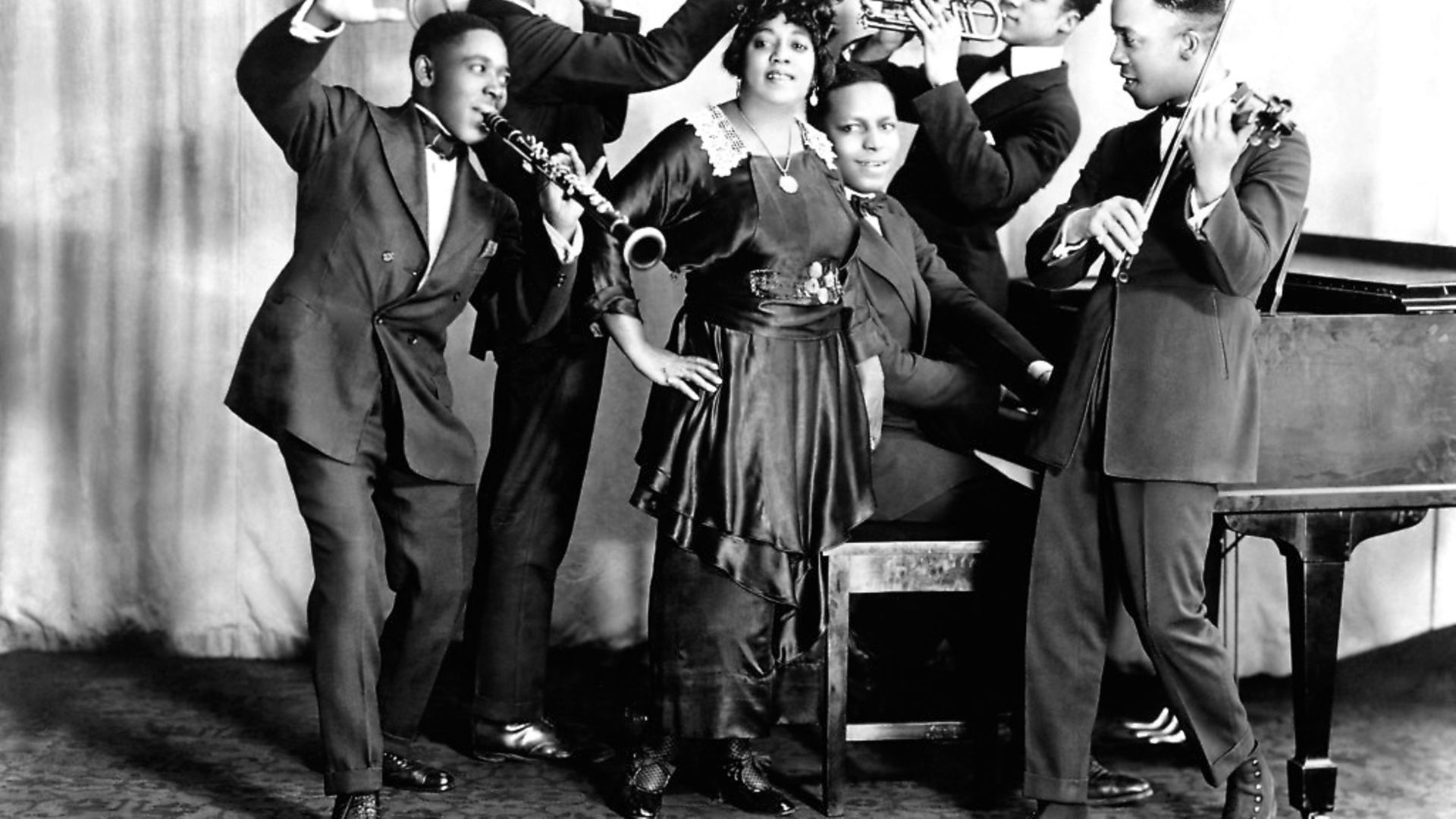
As recovery from the war continued, a new era of individualism and hedonism was already on the horizon. SOPHIA DEBOICK reports
Al Jolson was the biggest star of 1920, a Broadway sensation who was fast emerging as a dominant recording artist. The hit song of the year, Gershwin’s Swanee, only became so after Jolson put it into his show Sinbad at the Winter Garden Theatre in 1919 and then recorded it for Columbia the following January. It spent nine weeks at No.1 and Gershwin said ‘Swanee penetrated the four corners of the earth’.
That the song sold twice as many records as copies of sheet music proved that this was the burgeoning recording age, with the gramophone record having taken over from the phonograph cylinder just a decade before. With the first commercial radio stations being launched in Detroit and Pittsburgh towards the end of the year, and Westinghouse putting their $10 home radios on the market in September, Jolson would be one of many stars whose fame would grow exponentially through this new medium.
But the popularity of Jolson’s vaudevillian and lyrically mainstream material on record, and the acceptance of his use of blackface on stage, belied the emergent musical diversity and signs of the slow process of the emancipation of the marginalised of that year. Jolson’s co-option of black musical tradition was countered as black Americans began to reclaim it, with the blues emerging as a prospective commercial genre. Fittingly, in the year American women got the vote and the University of Oxford first admitted female students, it was a woman who took the lead in this process.
When Mamie Smith had starred in the 1918 revue Maid of Harlem at the Lincoln Theatre, one of the cradles of the Harlem Renaissance, it began her association with the show’s producer – the composer and sometime black minstrel, Perry Bradford.
Okeh Records had been founded that same year, quickly carving out a niche by issuing records in German, Czech, Polish, Swedish, and Yiddish for the US’s immigrant communities, and Bradford began to petition the label to do the same for African Americans. In his first session with Smith at Okeh on Valentine’s Day 1920 Bradford tested the waters with his pop songs That Thing Called Love and You Can’t Keep a Good Man Down, but that summer they went on to record Crazy Blues – the first commercial blues record.
Smith was a vaudeville performer, not a blues singer, but as a personal tale of sex, drugs, infidelity, violence, despair and death the song had all the lyrical hallmarks of the blues. Smith lamented ‘I can’t sleep at night, I can’t eat a bite/ Cause the man I love, He don’t treat me right’, before expressing suicidal intent and concluding ‘I’m gonna do like the Chinaman, go and get some hop [opium]/ Get myself a gun, and shoot myself a cop’.
Despite such dark lyrics at a time of light popular song, Crazy Blues and its B side It’s Right Here For You sold more than a million copies within a year and Smith, then aged 30, was launched on a stellar career, billed as ‘the Queen of the Blues’ as she toured the US and Europe. The commercial potential of the ‘race record’ had been proven, and black artists would increasingly set the direction of popular music – when Little Richard made Bradford’s Keep A-Knockin’ a hit in 1957, he commented: ‘Everything happens for a reason. Who knew that the style Perry was developing in the twenties would lead to rock and roll?’
The blues was moving into commercial territory where jazz was already well ensconced. With prohibition coming into force in January, the age of the speakeasy was soon upon New York, and these venues proved to be natural home for jazz as the city began to challenge Chicago as the capital of the genre. The Original Dixieland Jass Band, who had been responsible for the first true jazz record in 1917, were right in the centre of this changing landscape. With a reputation for wacky antics on-stage and issuing eye-catchingly controversial statements like ‘Jazz is the assassination of the melody, it’s the slaying of syncopation’, this white New Orleanian five-piece had enjoyed considerable notoriety, but by 1920 they were facing competition in New York’s growing marketplace and set out to target new audiences.
That spring, The Original Dixieland Jass Band became the first jazz band to play in London and quickly found themselves highly in demand, even playing a royal command performance at Buckingham Palace. On returning to the US in July, they proved they could still do well in their domestic market however, and Margie/ Singin’ the Blues with the B side Palesteena, recorded by the band in early December, became one of their biggest successes.
The single would get to No.9 in 1921, and versions by Eddie Cantor (his daughter Marjorie was the subject of the song), Gene Rodemich and His Orchestra, Ted Lewis and His Band and Frank Crumit would all be hits that year too. That the band’s pianist, Joseph Russel Robinson, who had co-written all three tracks, had joined the band when original pianist Henry Ragas died in the Spanish Flu pandemic, and that the band had also lost their trombonist when he was drafted for service in the First World War, proved that the world-changing events of the preceding years had repercussions in every industry and area of life.
In classical music too, the mark of the trials of the previous decade was heavy. The revolution in Russia had seen Rachmaninov flee to the US where he started a financially precarious new life with his family, supporting them as a touring performer. In 1920 he signed a recording contract with the Victor Talking Machine Company, securing a long-term steady income when the company was bought by RCA six years later.
Fellow Russian exile Prokofiev found only limited success in the US after arriving in the summer of 1918, and went to Paris in 1920 to work on The Tale of the Buffoon with Diaghilev’s Ballets Russes, with whom he had worked during the First World War. Meanwhile, in Britain, key works that had been in gestation during that war were debuted in this year, against a backdrop of continued memorialising, as the Imperial War Museum was opened, the Cenotaph was unveiled and the Unknown Warrior was buried.
Ralph Vaughan Williams had begun work on The Lark Ascending before the outbreak of the war, but returned to it with new intent after his years spent as a stretcher-bearer and soldier, and it was premiered in December 1920. A ‘silver chain of sound’, as George Meredith’s poem that inspired the piece had put it, it evoked the transcendent purity of a pastoral scene but also had a deep sense of reflection on loss.
November’s first complete public performance of Holst’s Planets suite similarly revealed a work given poignancy by the war, opening with Mars, a sonically terrifying evocation of battle, followed by Venus, the Bringer of Peace, which was soothing but nonetheless communicated an unnerving sense of uncertainty. Most poignantly, tragic war poet Ivor Gurney completed his War Elegy, continuing to write even as his mental health crumbled as a result of shell shock.
While in 1920 Western society, just like the landscape of the Western Front itself, still bore the scars of the almost unimaginably horrific conflict that had ended only months before, a new age of individualism and hedonism was on its way, and that this was a culture that would be both lived out and interpreted through mass entertainment was already clear.










